Headline News
Motion Picture Teamsters in the Spotlight
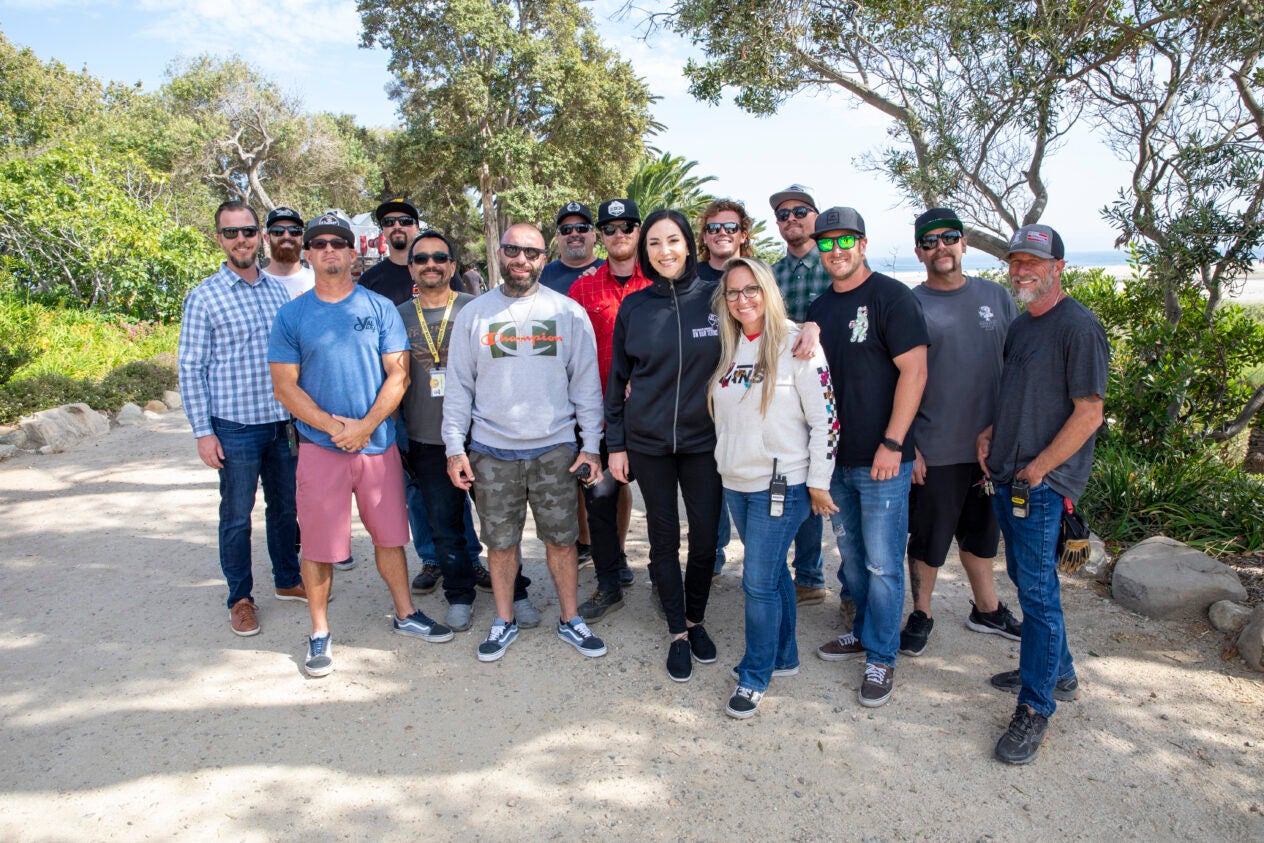
Wander onto the sets of some of the most popular films or television shows at any major studio, and you will see Teamsters playing an integral role in the production. Name your favorite show or movie, and there is a good chance that members of the Motion Picture and Theatrical Trade Division work behind the scenes.
There are literally hundreds of jobs on the set of a production—each with specific duties—that the Teamsters represent: drivers, location professionals, casting directors and associates, animal trainers/handlers and wranglers, dispatchers, DOT admins, mechanics, chef drivers and chef assistants and more. The division also represents members who support the production of feature films and television, like warehouse workers and union vendors that service the industry.
“Our members are essential to any production. They are skilled, dedicated workers who are critical to keeping this industry running,” said Lindsay Dougherty, International Vice President and Director of the Teamsters Motion Picture Division. “This is a high-profile industry, and we have an opportunity to increase the visibility of Motion Picture Teamsters across North America.”

Dougherty hit the ground running in her first month leading the division, implementing a new structure to support the 74 Teamster locals that represent members in the motion picture industry. Last week, she announced the appointments of five regional representatives: Western Region & Canada: Joshua Staheli (Local 399, Hollywood, Calif.); Southern Region: Vinnie Thrift (Local 728, Atlanta); Eastern Region: Brian Salomone and Jimmy Whalen (Local 817, New York City); Central Region: Jim Parrinello (Local 337, Detroit).
“I’ve been around for some time. I can honestly say this is an exciting moment to be a Teamster working in this industry,” said Ron Schwab, Assistant Director of the Teamsters Motion Picture and Theatrical Trade Division. “Lindsay has put together an experienced team that understands this industry firsthand. I’ve known and worked with each of them for many years, and I have confidence that given the opportunity, they will strengthen our division and do right by the members. Remember, a boat only makes a wave when it’s going forward. It’s time to make some waves with these employers to protect our members.”
Currently, the Motion Picture Division consists of 12,000 members across the U.S. and Canada. Although most productions are currently in Los Angeles (Local 399), New York City (Local 817), Atlanta (Local 728) and Vancouver, Canada (Local 155), states like Texas, Montana and Oklahoma have seen increasingly more filming in recent years.
“We are committed to identifying new targets and finding new and creative ways to organize,” Dougherty said. “In recent years, Local 399 has been aggressive with organizing—not just productions, but also the vendors that service the industry. We plan to implement this organizing model on a national level.”
Setting the Stage
The sun beams over Malibu as a production crew gathers atop a rocky cliff overlooking the Pacific Ocean. It’s a perfect Southern California afternoon, and Dougherty is on set of the HBO series Perry Mason to meet with members and share her vision for Teamsters in the motion picture industry.
A parade of actors dressed in 1930s costumes walk by as Dougherty exchanges hugs and handshakes. The camaraderie amongst the crew is palpable. There is a shared passion for the work; they enjoy the job as well as each other’s company.

“Our division will succeed through collaboration and solidarity. That has always been our greatest strength as Teamsters in this industry,” Dougherty tells the crew. “I look forward to building on our solidarity by keeping members informed and involved in the fights ahead.”
For Taylor Terrell, a Group 1 Driver on Perry Mason, the change in leadership is exciting—a chance to bring even more power to workers in the industry.
“We are looking forward to more opportunities under Lindsay’s leadership,” Terrell said. “She understands our passion and our drive because she’s worked these jobs, too. She knows what we need, and she’ll fight for us to get it.”
Working in Hollywood is both a childhood dream and a family legacy for Terrell. She grew up in Los Angeles in a Teamster family; her father worked as a tram driver at Universal Studios for 40 years.
“I wanted to drive trucks on movies since I was a little girl. When I was in my early 20s, I became a Teamster and started working on sets. I love my job. I love the excitement and being where the action is,” she said. “You can count on Motion Picture Teamsters to be focused and disciplined. We are proud of what we do.”
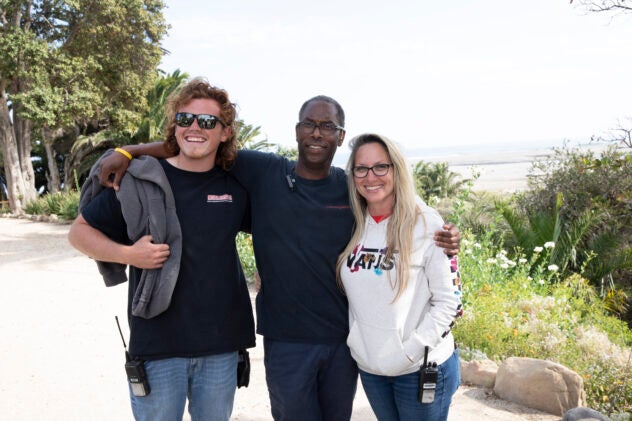
Terrell and her fellow drivers cling to their walkie-talkies, ready to go at a moment’s notice to assist in the production.
“When you have little time to spare for error, adhering to a schedule is of the utmost importance,” said Trevor Mann, a Local 399 member also working on the HBO series. “It’s up to us to keep production moving and on time.”
The Reel Deal
A second-generation Teamster from Detroit, Dougherty is considered “one of the fastest-rising stars in Hollywood labor circles.” She got her start in the industry while attending Oakland University, working as a transportation dispatcher on feature films. After college, she moved to Los Angeles to continue her work as a dispatcher on major blockbusters (The Island, Transformers: Age of Extinction and Star Trek) and to begin her career at Local 399. Since then, she has served in nearly every union position at Local 399—organizer, business agent, Recording Secretary and, as of May 1, Secretary-Treasurer and Principal Officer.
“I’ve been working under a union contract since I was 21, and I’ve been under a Teamster health care plan my entire life,” Dougherty said. “I’ve been in this industry for many years, since the first time I was around a movie set when I was 12. I’ve grown up in this industry.”
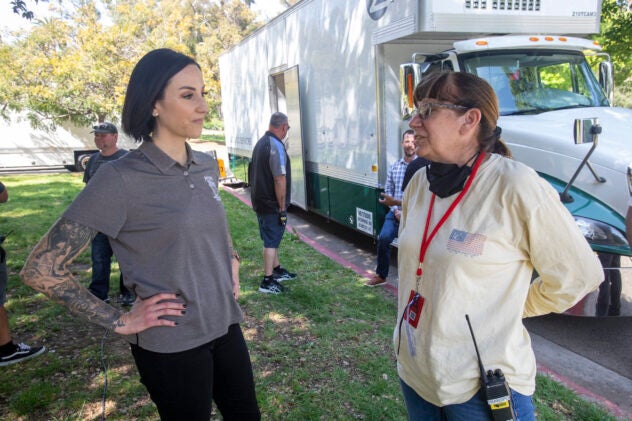
Earlier this year, General President Sean M. O’Brien announced Dougherty’s appointment as Director of the Teamsters Motion Picture Division—the first woman to serve in the position.
“Lindsay is the perfect fit for this job. She’s dedicated her working life to this industry and she’s a true Teamster. Like me, she grew up in a Teamster family and learned the importance of fighting for workers from an early age,” O’Brien said. “She understands what workers in the entertainment industry need and deserve, and she will lead this division into the future.”
Ready to Bargain
Dougherty was appointed lead negotiator at Local 399 last December. By February, she had already secured a new contract for more than 4,000 Motion Picture Teamsters across the 13 Western states—a three-year ‘Black Book’ Agreement with the Alliance of Motion Picture and Television Producers (AMPTP) that covers drivers, dispatchers, animal trainers/handlers, wranglers, mechanics, auto service and, just recently, DOT administrators.
“Our rank-and-file members were an active part of the negotiating process and with us every step of the way. That engagement translated into a historic turnout for the ‘Black Book’ Agreement, with 67 percent voter turnout and 89 percent of members voting in favor,” Dougherty said.
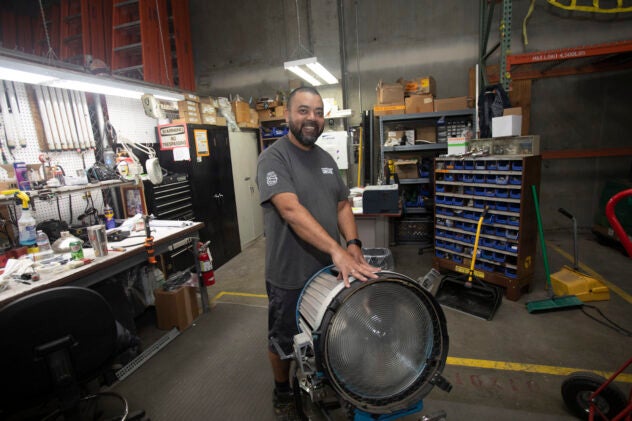
In early March, shortly before taking office, Dougherty negotiated a new Location Managers Agreement with the AMPTP. The contract took effect March 13 and covers location managers, key assistant location managers and assistant location managers.
“Together, we were able to creatively make economic gains. Our goal was to address our members’ core issues and leave no money on the table,” she said. “As a division, we need to come together to ensure our members have the same golden standard of wages, benefits and working conditions. I look forward to bringing my negotiating experience to all Motion Picture Teamsters and vow to fight for them at the bargaining table.”
Dougherty is currently in negotiations with the AMPTP for casting directors at Local 399. When it comes to contracts, she is equally focused on protecting members after the bargaining effort.
“Contract enforcement is one of our immediate priorities for the division. We need to make sure employers are held accountable and that our members are working under the highest standards,” Dougherty said. “Teamsters know that the fight doesn’t stop after a contract is ratified. There are always more issues to be addressed and gains to be achieved for our members.”
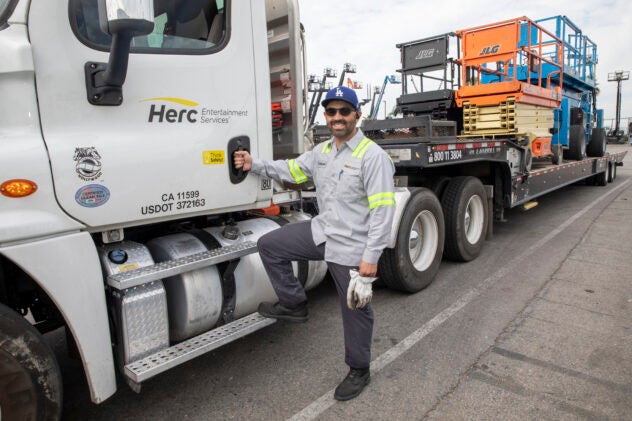
New Landscape, New Opportunities
TV and film production is at a historic all-time high. New media streaming companies like Netflix, Amazon, Disney+ and Apple are competing for viewers and content. While the new platforms have created more work for members, they are also sticking point for the union.
“Streaming has changed the media landscape, allowing for new opportunities as well as new fights. We are going to be vigilant in our fight to make sure our members receive the best standards possible when working on productions for these new platforms,” Dougherty said.
The streaming boom was in full swing when the pandemic hit and brought the entire industry to an abrupt halt. With millions of Americans forced to stay home, the need for content became an essential service and Motion Picture Teamsters were back on set by Summer 2020.
“For someone that doesn’t know Hollywood, I could understand how it could be a little puzzling, like, ‘We aren’t saving lives, so why are we essential workers?’ My thoughts are that the content that is put out on the internet—through streaming, through TV, through network stations—gave people hope during a difficult time. People have lost family members, people have gotten the virus, people have lost their jobs. There was a lot of peril going on, especially at the beginning of the COVID-19 lockdown. New content from TV, movies and even commercials helped people get away, and to me, that’s essential,” said Philip Quansah, a Group 1 Driver and Local 399 Trustee.
The pandemic drastically changed the old model for releasing movies. Subscriptions to streaming services, which jumped 14 percent in 2020, reached a global total of 1.3 billion, a new record high.
The streaming war is far from over and production continues to thrive, creating good paying union jobs for Teamsters across a variety of classifications.
On the Horizon
It can take years to learn what each person does on the set of a production. But one thing remains constant: the more you learn, the more you earn.
The best way to attract good paying motion picture projects is to have skilled workers. Most of these skills can be gained by simply coming to work, but Local 399 has given its members the resources to stay ahead of the game.
“We’re engaging members in a different way through technology. It’s allowed us to build a stronger and more united membership. We plan to continue the use of these communication tools and scale them on a national level to help tackle the challenges that lie ahead,” Dougherty said.
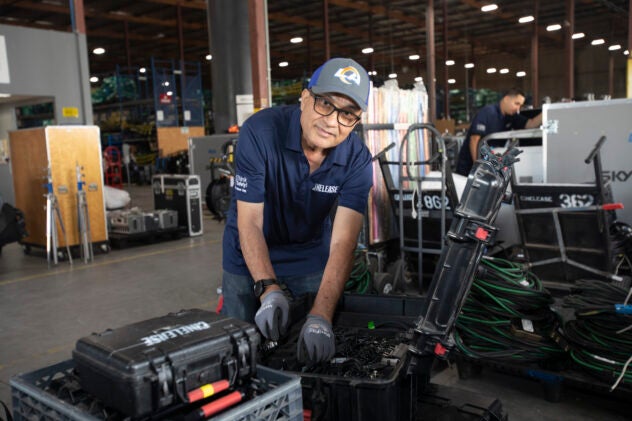
Dougherty has long known the importance of educating members who work in production. Local 399 has developed a series of classes ranging from contract education to leadership training. During the pandemic these classes transitioned from in-person to being hosted digitally via Zoom where more members were able to take part.
This summer, Dougherty plans to hold a division meeting with General President Sean O’Brien inviting rank-and-file Motion Picture Teamsters to hear updates and a rollout of the official strategy for rebuilding and strengthening the division. Sign up via the link below to ensure you are aware of the important updates and next steps for the Motion Picture and Theatrical Trade Division across North America.
CLICK HERE TO SIGN UP FOR DIVISION UPDATES